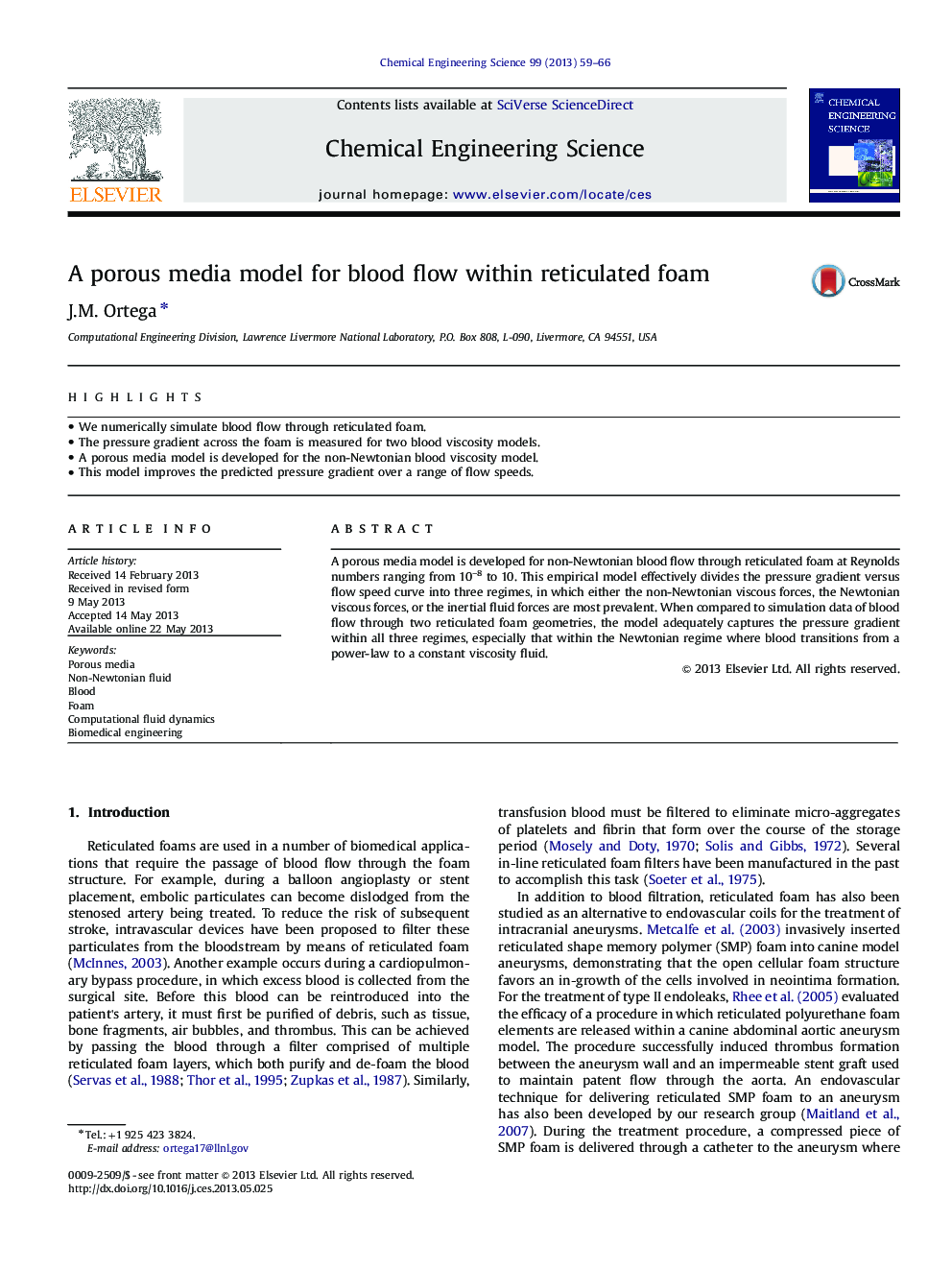| Article ID | Journal | Published Year | Pages | File Type |
|---|---|---|---|---|
| 155141 | Chemical Engineering Science | 2013 | 8 Pages |
•We numerically simulate blood flow through reticulated foam.•The pressure gradient across the foam is measured for two blood viscosity models.•A porous media model is developed for the non-Newtonian blood viscosity model.•This model improves the predicted pressure gradient over a range of flow speeds.
A porous media model is developed for non-Newtonian blood flow through reticulated foam at Reynolds numbers ranging from 10−8 to 10. This empirical model effectively divides the pressure gradient versus flow speed curve into three regimes, in which either the non-Newtonian viscous forces, the Newtonian viscous forces, or the inertial fluid forces are most prevalent. When compared to simulation data of blood flow through two reticulated foam geometries, the model adequately captures the pressure gradient within all three regimes, especially that within the Newtonian regime where blood transitions from a power-law to a constant viscosity fluid.
